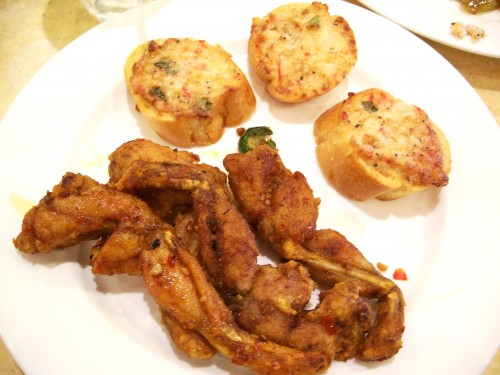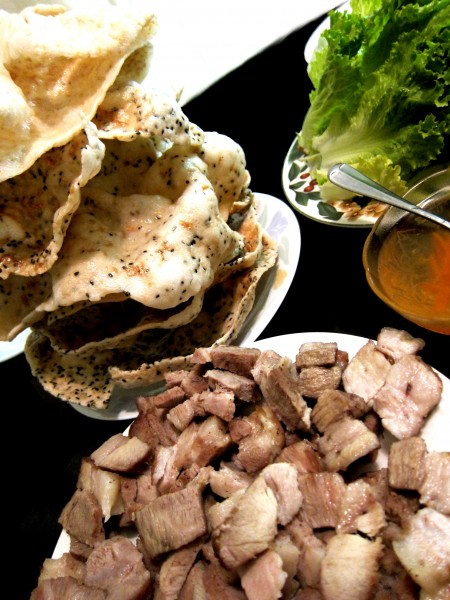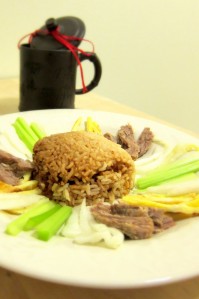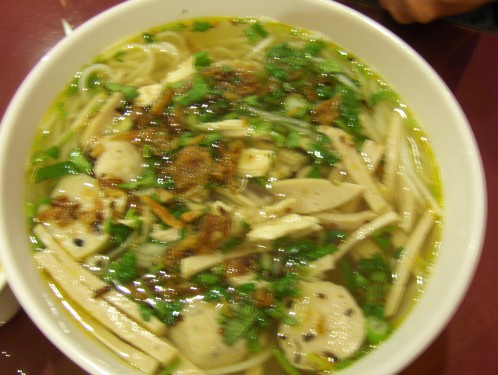
Almost every Sunday we make a trip to Bellaire to get the usual supply of patechaud, cha lua, banh gio, and the like. Almost every Sunday the question’s asked: where will we eat today? Well, there are two choices: the all-too-familiar Kim Son, and the more adventurous find which can be anything Little Mother saw in the local Vietnamese newspaper ads. We’ve had our handfuls of adventurous finds, all are good, but as usual smaller places don’t have a big selection, the menus are either common banh mi and pho, or grandiose names we don’t particularly care for. Mother is also easily shy away by the appearance of a restaurant: if the setting doesn’t look good, the food won’t taste good. So back we headed to Kim Son today…
We opted for the popular choice of a lunch buffet. We got there early enough, meaning at 11, when it’s just opened and there was banh canh. 15 minutes later and it was all gone. Out of banh canh noodle they said. The soup is not left unattended like the rest of the food trays known and visited by many. No, that would have reduced the availability to 5 minutes. It’s hidden in the right corner of the diner, in something can appropriately be called a kitchen box, with fellow roasted ducks and another noodle soup of the day. You go over there, order, stand around watching the cook slap a bunch of noodle, shrimp and pork, and pour a couple ladles of steaming broth into your bowl, you go back to your seat and start slurping. It’s really slurping, even chopsticks have a hard time holding the noodles in place long enough, don’t even try spoon and fork. They’re quick, short, round, and annoyingly feeble. It’s too easy to break them, but it’s hard to put them in your mouth before you flick a drop of broth to somewhere it shouldn’t be. The taste is worth the sloppy embarrassment, though. Banh canh and hu tiu are somewhat similar, the final touch in each bowl is a dollop of mo hanh (chives stir fried in lard and fried shallots). It adds savoriness, enhances the mix of meaty and sweet. A very hearty soup. I even drank the broth. The small bowl is a perfect belly hit.

Not to be healthy I packed a few frog legs and fried shrimp-pasted toasts down my throat afterwards. Great baguette. Frog legs would have been great too if not for the irritatingly overloaded hot pepper. When something’s hot, it’s just hot. Hot overpowers everything. Can’t taste another daggum flavor, if there were any. Dunno about you but I find that boring. The meat is kinda dry (I would be too if I were covered in hot pepper) and sinewy. But they do look sporty, don’t they? 🙂
(more…)








